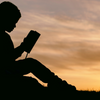Strategies for Autistic Individuals Navigating Sensory Overload In Public Spaces

For autistic individuals, public spaces can be overwhelming due to sensory overload. The sights, sounds, and smells can be too much to handle, leading to anxiety, frustration, and even shutdowns or meltdowns. In this article, we will explore strategies for autistic individuals to navigate sensory overload in public spaces, including the Touchpoint Solution.
What is sensory overload?
Sensory overload occurs when the brain is unable to process and filter out sensory information properly. This can result in a feeling of overwhelm, anxiety, and stress, making it challenging for individuals to navigate public spaces.
Strategies for navigating sensory overload in public spaces:
-
Identify triggers: The first step in managing sensory overload is to identify what triggers it. Autistic individuals can keep a sensory diary to track which environments or stimuli cause the most stress.
-
Plan ahead: Knowing what to expect in a public space can help reduce anxiety. Autistic individuals can research the space beforehand, such as looking at maps, photos, and reviews, to prepare themselves.
-
Use noise-cancelling headphones: Noise-cancelling headphones can help to reduce auditory stimuli and create a calming environment. They can also be used to listen to soothing music or white noise.
-
Take breaks: Taking breaks from a public space can help to alleviate stress and sensory overload. Autistic individuals can find a quiet area or designated sensory room to take a break and recharge.
-
Use deep pressure stimulation: Deep pressure stimulation, such as using a weighted blanket or compression clothing, can provide a calming effect and reduce anxiety.
-
Use the Touchpoint Solution wearable devices: TouchPoints are wearable devices that uses neuroscience to alleviate stress and anxiety. The device provides gentle, haptic vibrations to the body, which can help to calm the nervous system and reduce sensory overload.
Navigating sensory overload in public spaces can be challenging for autistic individuals. However, by identifying triggers, planning ahead, using noise-cancelling headphones, taking breaks, using deep pressure stimulation, and utilizing the Touchpoint Solution, autistic individuals can manage sensory overload effectively and navigate public spaces with greater ease.




